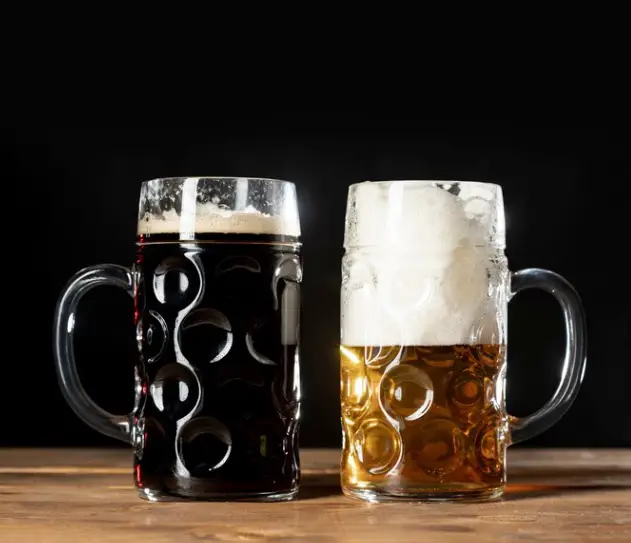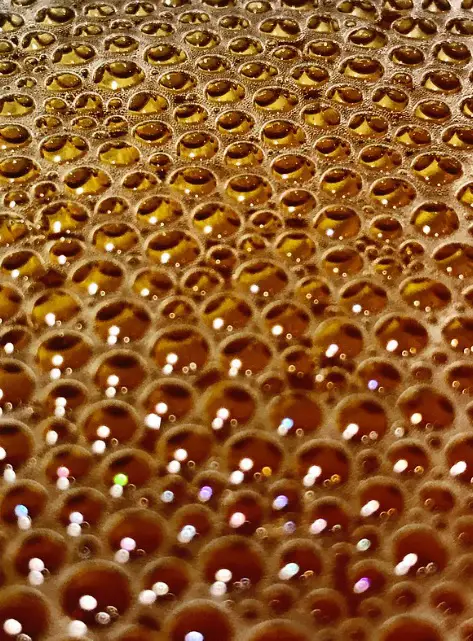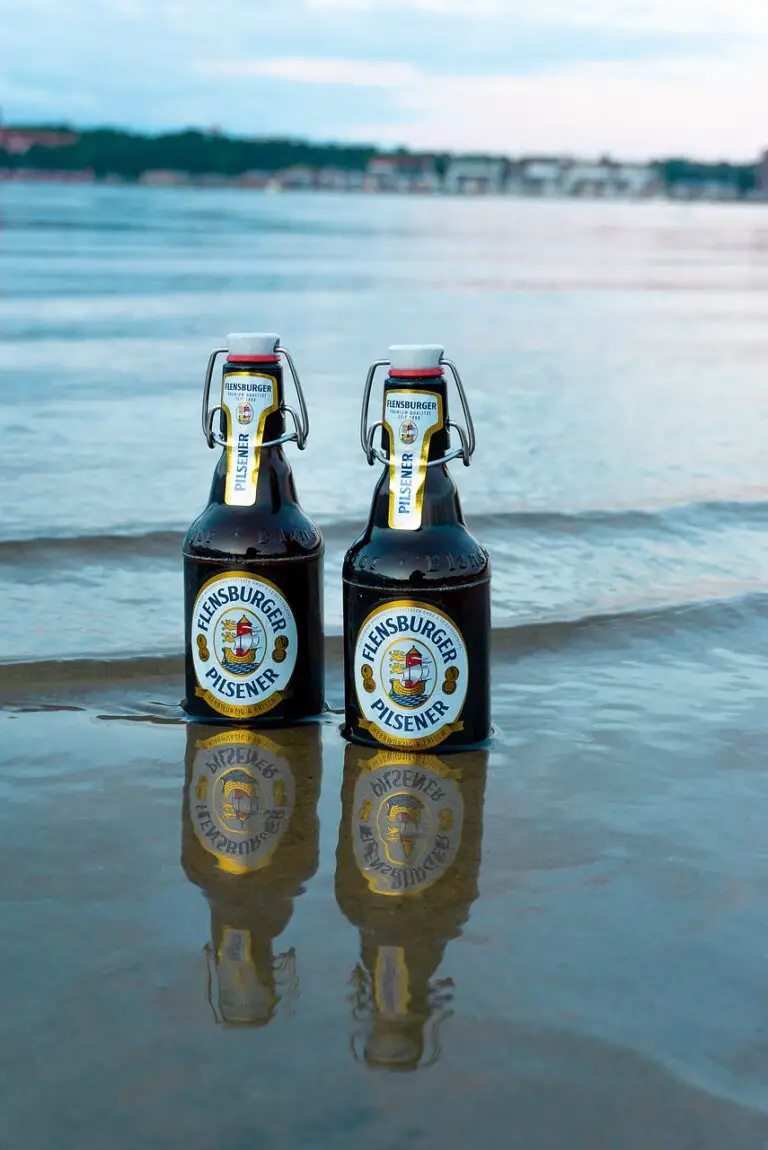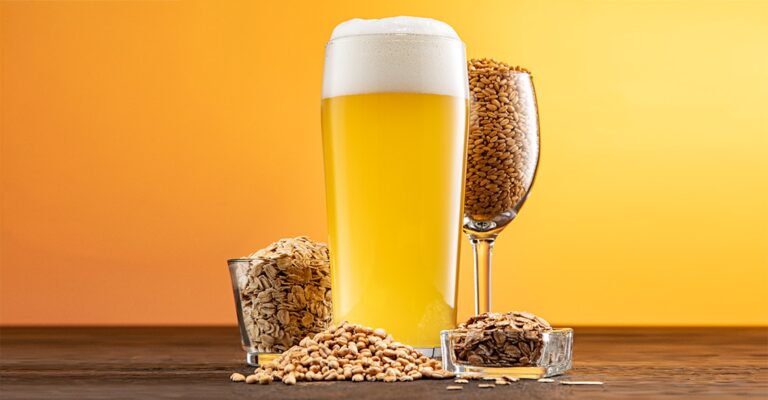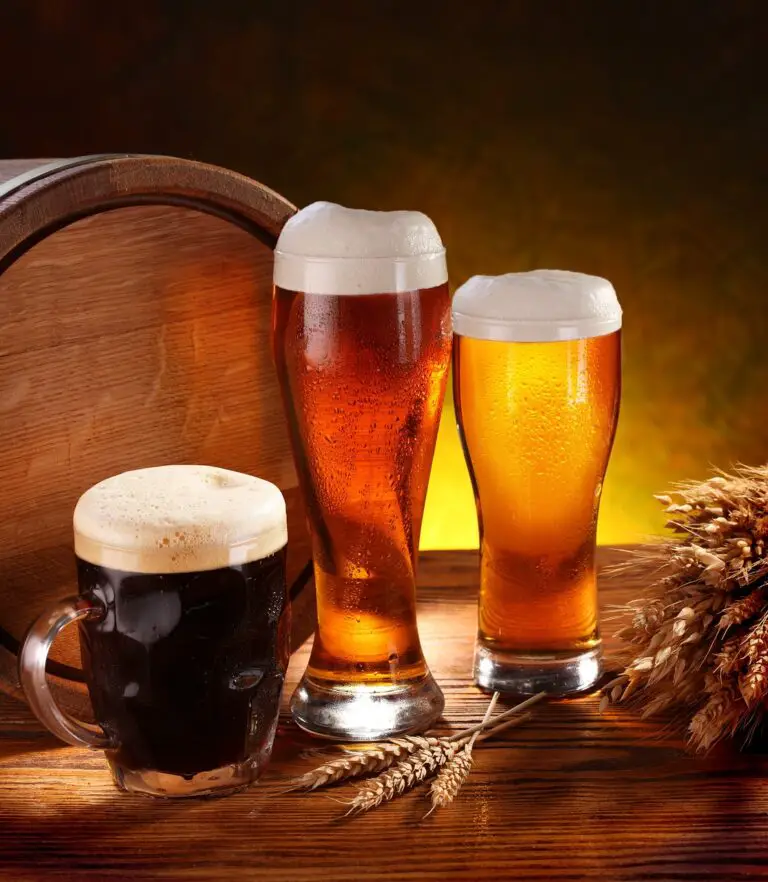Can You Add Anything To Beer?
Beer is good, but can you make it even better? What can you add to beer to make it even better? Can you add anything to beer? Let’s see!
Yes, you can add various ingredients to beer, expanding its flavors and profiles. Beyond the traditional water, malt, hops, and yeast, brewers often experiment with additions like fruits, spices, herbs, and unconventional elements like coffee or chocolate. Some add even more salt.
Homebrewers, in particular, have the freedom to get creative, but it’s crucial to strike a balance to avoid overpowering the beer’s core characteristics. Adding ingredients can enhance the beer-drinking experience, making it a versatile and exciting beverage.

The Fundamental Beer Ingredients
Beer typically consists of four fundamental ingredients, known as the core elements of brewing:
- Water: The primary component of beer, water serves as the base for the brewing process. The mineral content in water can influence the flavor and character of the beer.
- Malt: Malted barley or other grains provide the sugars needed for fermentation. Malting involves germinating and then drying the grains, converting starches into fermentable sugars. The type of malt used contributes to the beer’s color, flavor, and body.
- Hops: Hops are flowers or cones that add bitterness, flavor, and aroma to beer. They also act as a natural preservative. The choice and timing of adding hops during the brewing process influence the beer’s taste profile.
- Yeast: Yeast is a microorganism responsible for fermentation, where it consumes sugars produced during malting, converting them into alcohol and carbon dioxide. The yeast strain used can significantly impact the beer’s final taste and aroma.
These four ingredients form the foundation of beer, and variations in their types and proportions contribute to the diverse range of beer styles available.

Common Beer Additions
Common additions to beer go beyond the basic ingredients and often involve variations in hop varieties and malt types. Here’s a brief overview:
- Hop Varieties:
- Bitterness and Flavor: Different hop varieties contribute varying levels of bitterness and distinctive flavors to beer. For example, Cascade hops impart floral and citrus notes, while Saaz hops offer a more earthy and herbal character.
- Aroma: Hops also contribute to the aroma of beer. Some hops are prized for their aromatic qualities, adding floral, fruity, or spicy scents. Dry hopping, or adding hops during or after fermentation, enhances the aroma without significantly increasing bitterness.
- Types of Malts:
- Base Malts: These form the majority of the grain bill and provide the essential fermentable sugars. Common examples include pale malt and Pilsner malt.
- Specialty Malts: These contribute color, flavor, and body to the beer. For instance, caramel malts add sweetness and color, while chocolate malts impart roasted, coffee-like flavors and a dark color.
- Roasted Malts: Used in stouts and porters, roasted malts bring intense color and flavors like coffee, chocolate, and toffee.
- Influence on Flavor, Body, and Color:
- Flavor: Hop additions, especially late in the brewing process, can impart hoppy flavors ranging from citrus and pine to tropical fruits. Various malts contribute flavors such as caramel, toffee, biscuit, and roasted notes.
- Body: The choice and amount of malt impact the beer’s body, ranging from light and crisp to full and creamy. Caramel malts, for instance, can add a smooth, sweet character.
- Color: The color of beer is influenced by the type and quantity of malts used. Light malts produce pale beers, while darker malts create amber, brown, or black colors.
In summary, the selection of hop varieties and malts allows brewers to craft a wide spectrum of flavors, aromas, body, and colors, providing beer enthusiasts with a rich and diverse range of options.

Uncoventional Beer Additions
Unconventional additions to beer involve a creative exploration of flavors, often extending beyond traditional ingredients. Here’s a closer look at some of these unconventional additions:
- Fruits and Spices:
- Fruits: Brewers experiment with a variety of fruits to add unique flavors to beer. Berries, citrus fruits, tropical fruits, and stone fruits are commonly used. For example, blueberries can impart a sweet and tart character, while orange peel adds citrusy notes.
- Spices: Spices like coriander, ginger, cinnamon, and cloves can be added to create complex and spicy flavor profiles. Belgian-style Witbiers often include a blend of spices, contributing to their distinctive taste.
- Experimental Ingredients:
- Coffee: Adding coffee to beer introduces rich, roasted flavors and a subtle bitterness. Coffee stouts and porters are popular styles that showcase this combination.
- Chocolate: Chocolate malt is a common ingredient, but brewers also incorporate actual chocolate for a more pronounced chocolate flavor. This addition is prevalent in chocolate stouts and chocolate porters.
- Herbs and Botanicals: Some brewers use herbs and botanicals for a botanical twist. Examples include chamomile, lavender, or even juniper berries. These additions can impart floral, herbal, or spicy notes to the beer.
- Unusual Ingredients: Adventurous brewers may experiment with unexpected additions such as chili peppers for heat, bacon for a savory touch, or even oysters for a briny character. These offbeat ingredients challenge traditional notions of beer flavor.
- Very Unusual Additions:
- Wild Yeasts and Bacteria: Some brewers embrace wild yeast strains like Brettanomyces or use lactic acid bacteria to create sour and funky beers. These additions contribute complex and unpredictable flavors.
- Seaweed and Sea Salt: In coastal regions, brewers may add seaweed or sea salt to create briny, oceanic notes. This is often seen in styles like Gose or other salted beers.
- Floral Additions: Edible flowers like hibiscus, elderflower, or rose petals can be used to infuse floral aromas and flavors into beer.
These unconventional additions showcase the innovative spirit of modern brewing, allowing for a wide range of beer styles that push the boundaries of traditional expectations.

Creative Ingredients in Homebrewing
Homebrewing offers a wonderful platform for beer enthusiasts to experiment with creative ingredients, pushing the boundaries of traditional brewing. Here are some creative ingredients commonly used in homebrewing:
- Fruit Additions:
- Berries: Blueberries, raspberries, strawberries, and blackberries can be added to impart fruity sweetness and tartness.
- Citrus: Orange zest, lemon peel, or grapefruit can bring bright and zesty flavors to the beer.
- Tropical Fruits: Pineapple, mango, and passion fruit can add exotic and tropical notes.
- Spices and Herbs:
- Coriander: Commonly used in Belgian-style Witbiers, coriander adds a citrusy and spicy character.
- Ginger: Provides a warm and slightly spicy kick, often used in various beer styles.
- Cinnamon and Nutmeg: Perfect for winter and holiday-themed beers, these spices add warmth and complexity.
- Experimental Ingredients:
- Coffee and Chocolate: Homebrewers can experiment with different coffee beans and chocolate varieties to create unique flavors, especially in stouts and porters.
- Maple Syrup and Honey: Adding these sweeteners during the brewing process can enhance the beer’s sweetness and complexity.
- Vanilla: Vanilla beans or extract can impart a smooth and creamy flavor, complementing a range of beer styles.
- Unusual Ingredients:
- Chili Peppers: For those who enjoy a bit of heat, adding chili peppers can create spicy and warming sensations.
- Wood Aging: Homebrewers can experiment with aging beer on wood chips or using wooden barrels to impart flavors like oak, bourbon, or wine.
- Tea: Adding tea leaves, such as Earl Grey or chamomile, can introduce unique herbal and floral notes.
- Wild Yeasts and Bacteria:
- Brettanomyces: Introducing wild yeast strains like Brettanomyces can result in funky and sour characteristics, adding complexity to the beer.
- Lactic Acid Bacteria: Creating sour beers by intentionally introducing lactic acid bacteria can produce refreshing and tangy brews.
- Seasonal Ingredients:
- Pumpkin: Popular in fall, pumpkin can be used in pumpkin ales, contributing a spiced and autumnal flavor.
- Herbs from the Garden: Homebrewers can experiment with herbs like basil, thyme, or mint from their gardens to create unique and garden-fresh brews.
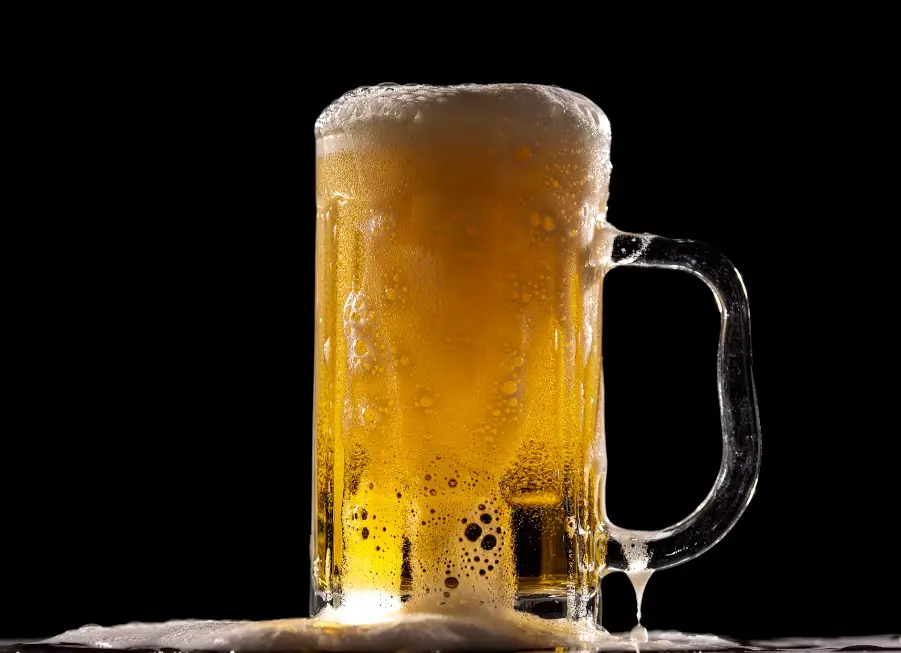
The Debate – Traditional Beer vs. Experimental Beer
The debate between traditional beer and experimental beer is ongoing, reflecting a dynamic and evolving landscape in the brewing world. Let’s explore the trends, major pros, and cons for each side of the debate:
Traditional Beer:
Trends:
- Heritage Styles: There is a resurgence of interest in traditional, historical beer styles. Breweries and craft brewers are revisiting classic recipes, embracing traditional brewing techniques, and adhering to regional brewing practices.
- Purity Standards: Some brewers and beer enthusiasts advocate for adherence to purity standards, such as the German Beer Purity Law (Reinheitsgebot), which limits ingredients to water, malt, hops, and yeast.
Pros:
- Authenticity: Traditional beer styles are cherished for their authenticity and cultural significance. They often carry centuries-old brewing traditions and regional nuances.
- Predictability: Traditional beers tend to be more predictable in terms of flavor, allowing consumers to have a general expectation of what they are getting.
Cons:
- Lack of Innovation: Critics argue that a strict adherence to tradition may stifle innovation, limiting the exploration of new flavors and brewing techniques.
- Narrower Appeal: Some traditional styles may have a narrower appeal, especially among consumers who seek diverse and unique flavor experiences.

Experimental Beer:
Trends:
- Craft Beer Revolution: The craft beer movement has driven a surge in experimental brewing, encouraging brewers to push boundaries and create unique, flavor-forward beers.
- Ingredients Exploration: Brewers are increasingly incorporating unconventional ingredients such as fruits, spices, herbs, and even non-traditional grains to create innovative and distinct flavors.
Pros:
- Innovation: Experimental brewing allows for constant innovation, leading to the discovery of new and exciting flavor combinations that challenge traditional norms.
- Diverse Offerings: The wide range of experimental beers caters to a diverse audience, appealing to those seeking novel and adventurous taste experiences.
Cons:
- Quality Control Challenges: With experimentation comes the risk of inconsistency and quality control issues. Not every experimental brew may resonate with consumers, leading to variable results.
- Polarizing Flavors: Some experimental beers, especially those with unconventional ingredients, may have polarizing flavors that not everyone appreciates.
The debate between traditional and experimental beer is not about determining a clear winner but rather recognizing the value in both approaches. Traditional beer maintains cultural roots and authenticity, providing a sense of heritage. Experimental beer, on the other hand, propels the industry forward, encouraging creativity and diversity.

Wrapping It Up
The potential additions to beer are as varied as the flavors they produce. From the tried-and-true components of water, malt, hops, and yeast to the more adventurous realms of fruits, spices, and experimental elements, beer stands as a medium for boundless creativity. Whether embracing time-honored traditions or venturing into uncharted flavor territories, beer’s allure lies in its adaptability.
So, is there anything you can add to beer? Certainly!

I am a young architect with a passion that goes beyond blueprints… it’s beer! undertherosebrewing.com is more than just a blog, it’s a manifestation of my lifelong dream to explore, read, and learn everything about beer. Join the blog on this unfiltered and genuine adventure into the heart of beer culture. Cheers!

